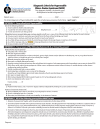A Case of Complex Regional Pain Syndrome With Hypermobile Ehlers-Danlos Syndrome and Mast Cell Activation Syndrome: The Role of Unconventional Therapies
- PMID: 40809669
- PMCID: PMC12346194
- DOI: 10.7759/cureus.87898
A Case of Complex Regional Pain Syndrome With Hypermobile Ehlers-Danlos Syndrome and Mast Cell Activation Syndrome: The Role of Unconventional Therapies
Abstract
Complex regional pain syndrome (CRPS) type 2 is a chronic pain condition that develops after a nerve injury and is characterized by severe pain, allodynia, and functional impairments. Ehlers-Danlos syndrome hypermobility type (hEDS) and mast cell activation syndrome (MCAS) are connective tissue and inflammatory disorders that may contribute to the development of CRPS. Despite various treatment approaches, effective pain management remains a challenge, particularly in complex cases involving underlying genetic predispositions. We report the case of a 42-year-old female with a history of CRPS type 2, who was recently diagnosed with hEDS and had a family history of MCAS. Her clinical symptoms of chronic pain and gastrointestinal (GI) disturbances were unresponsive to typical therapeutic interventions. She was being managed with multiple medications. With this thought in mind, montelukast, a leukotriene receptor antagonist, was introduced, and the patient reported an initial improvement in pain. Cromolyn sodium, a mast cell stabilizer, was also added to her treatment regimen to further target her pain exacerbation. Finally, an anti-inflammatory focused GI regimen including betaine HCl, quercetin with bromelain, and other digestive enzymes was trialed. Her progress was monitored using a pain scale over the next six months. However, due to declining health, a subjective narrative scoring system replaced the Visual Analog Scale to represent her fluctuating and multifaceted symptom experience better. The relationship between hEDS, MCAS, and CRPS suggests a multifactorial pathogenesis involving connective tissue fragility, mast cell dysregulation, and neurogenic inflammation. Montelukast, cromolyn sodium, and GI supplementation represent potential therapeutic interventions for managing patients with CRPS linked to MCAS. These treatments offer a novel approach by targeting mast cell-mediated inflammation. This case emphasizes the need for further research into the role of mast cell stabilization in CRPS treatment to improve patient outcomes.
Keywords: complex regional pain syndrome (crps); cromolyn sodium; ehlers-danlos syndrome; mast cell activation; montelukast.
Copyright © 2025, Shabbir et al.
Conflict of interest statement
Human subjects: Informed consent for treatment and open access publication was obtained or waived by all participants in this study. Conflicts of interest: In compliance with the ICMJE uniform disclosure form, all authors declare the following: Payment/services info: All authors have declared that no financial support was received from any organization for the submitted work. Financial relationships: All authors have declared that they have no financial relationships at present or within the previous three years with any organizations that might have an interest in the submitted work. Other relationships: All authors have declared that there are no other relationships or activities that could appear to have influenced the submitted work.
Figures
Similar articles
-
AGA Clinical Practice Update on GI Manifestations and Autonomic or Immune Dysfunction in Hypermobile Ehlers-Danlos Syndrome: Expert Review.Clin Gastroenterol Hepatol. 2025 Jul;23(8):1291-1302. doi: 10.1016/j.cgh.2025.02.015. Epub 2025 May 19. Clin Gastroenterol Hepatol. 2025. PMID: 40387691 Review.
-
Prescription of Controlled Substances: Benefits and Risks.2025 Jul 6. In: StatPearls [Internet]. Treasure Island (FL): StatPearls Publishing; 2025 Jan–. 2025 Jul 6. In: StatPearls [Internet]. Treasure Island (FL): StatPearls Publishing; 2025 Jan–. PMID: 30726003 Free Books & Documents.
-
Physiotherapy for pain and disability in adults with complex regional pain syndrome (CRPS) types I and II.Cochrane Database Syst Rev. 2016 Feb 24;2(2):CD010853. doi: 10.1002/14651858.CD010853.pub2. Cochrane Database Syst Rev. 2016. Update in: Cochrane Database Syst Rev. 2022 May 17;5:CD010853. doi: 10.1002/14651858.CD010853.pub3. PMID: 26905470 Free PMC article. Updated.
-
The Black Book of Psychotropic Dosing and Monitoring.Psychopharmacol Bull. 2024 Jul 8;54(3):8-59. Psychopharmacol Bull. 2024. PMID: 38993656 Free PMC article. Review.
-
Hypermobile Ehlers-Danlos syndrome and disorders of the gastrointestinal tract: What the gastroenterologist needs to know.J Gastroenterol Hepatol. 2022 Sep;37(9):1693-1709. doi: 10.1111/jgh.15927. Epub 2022 Jul 20. J Gastroenterol Hepatol. 2022. PMID: 35750466 Free PMC article.
References
-
- Complex regional pain syndrome. Bruehl S. https://pubmed.ncbi.nlm.nih.gov/26224572/ BMJ. 2015;351:0. - PubMed
-
- Systemic complications of complex regional pain syndrome. Schwartzman RJ. https://pubmed.ncbi.nlm.nih.gov/26224572/ Neurosci Med. 2013;13:225–242.
-
- Hypermobile Ehlers-Danlos syndrome (a.k.a. Ehlers-Danlos syndrome type III and Ehlers-Danlos syndrome hypermobility type): clinical description and natural history. Tinkle B, Castori M, Berglund B, Cohen H, Grahame R, Kazkaz H, Levy H. https://www.ehlers-danlos.com/wp-content/uploads/2022/12/Castori_et_al-2.... Am J Med Genet C Semin Med Genet. 2017;175:48–69. - PubMed
-
- Treatment of complex regional pain syndrome (CRPS) using low dose naltrexone (LDN) Chopra P, Cooper MS. https://www.ncbi.nlm.nih.gov/pmc/articles/PMC3661907/ J Neuroimmune Pharmacol. 2013;8:470–476. - PMC - PubMed
-
- Mast cells: versatile gatekeepers of pain. Chatterjea D, Martinov T. https://www.ncbi.nlm.nih.gov/pmc/articles/PMC4171343/ Mol Immunol. 2014;63:38–44. - PMC - PubMed
Publication types
LinkOut - more resources
Full Text Sources


